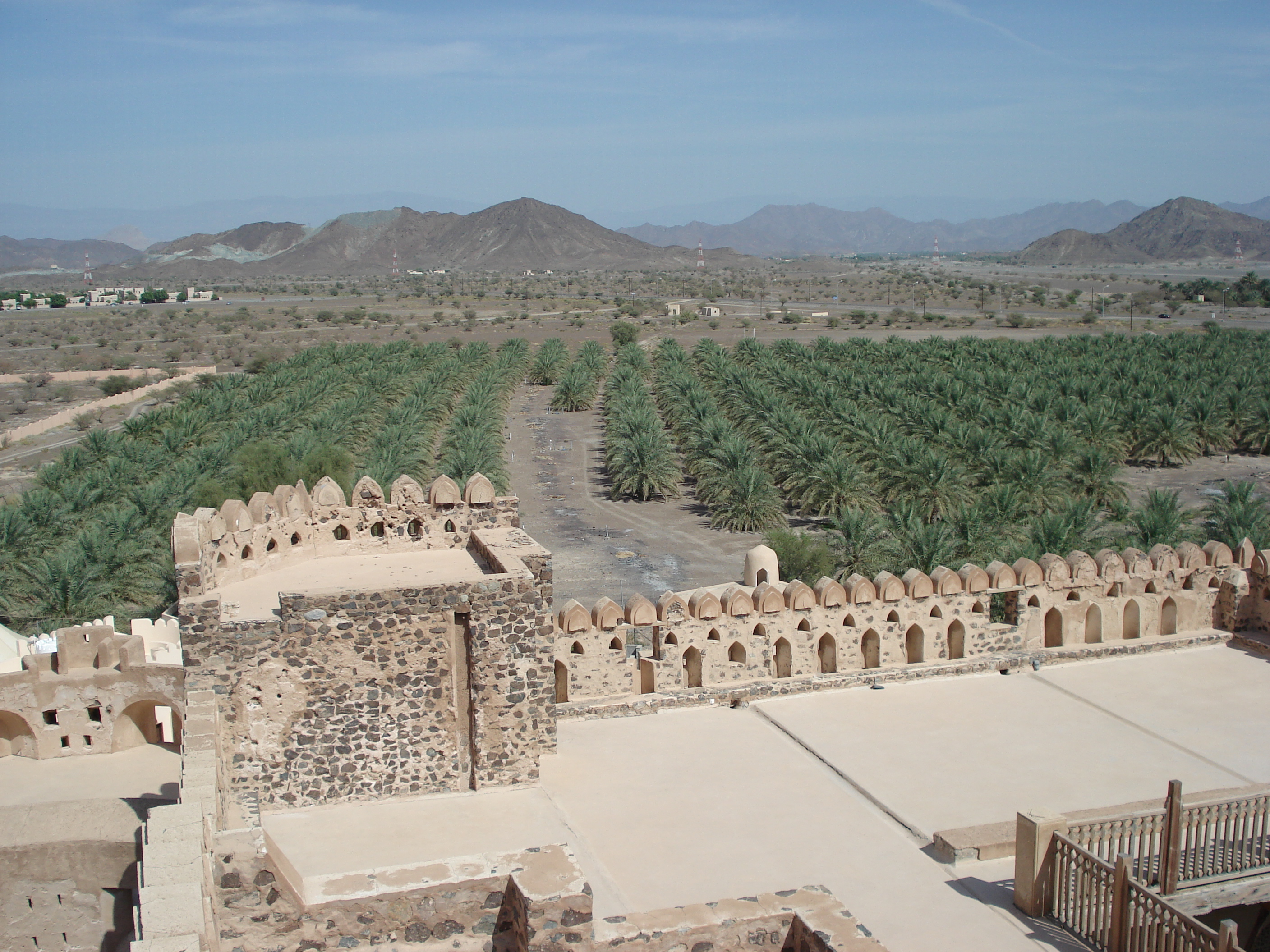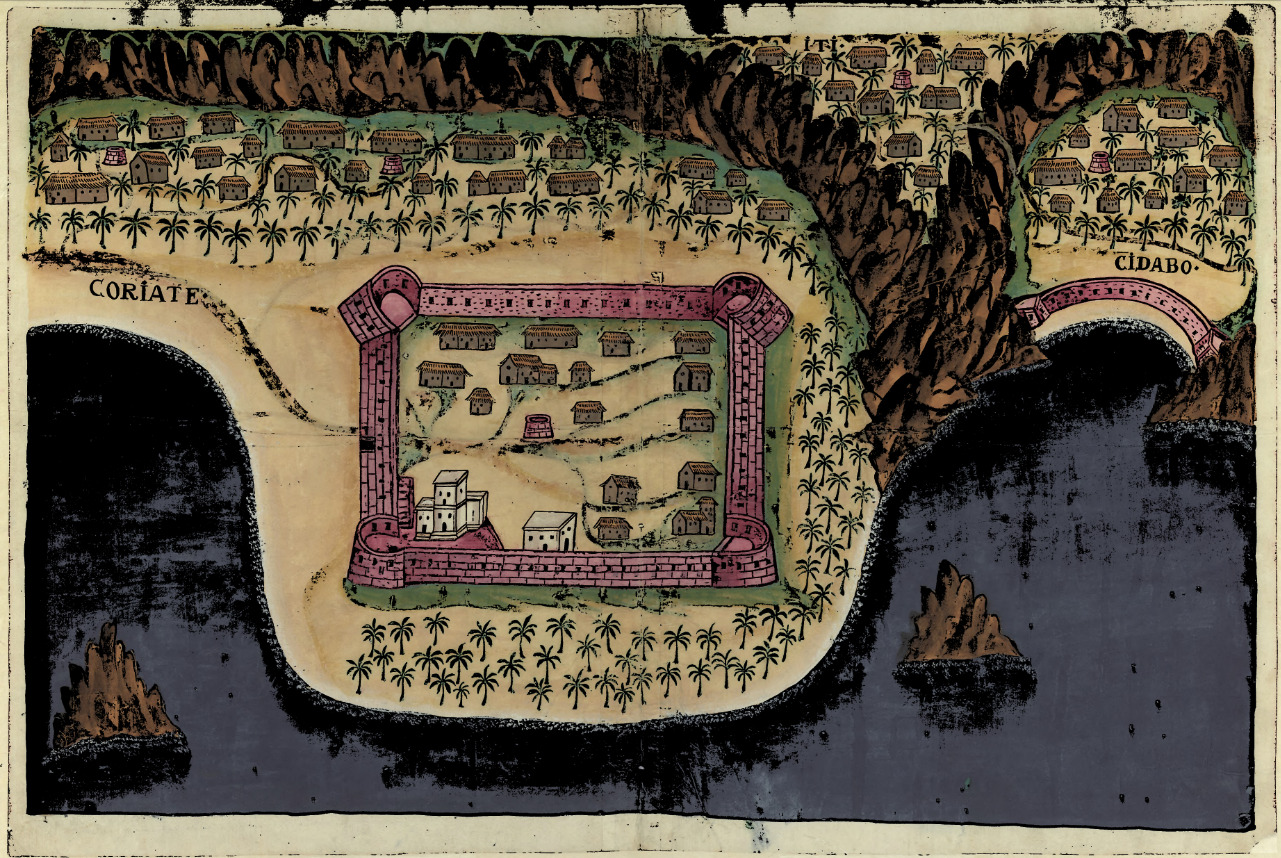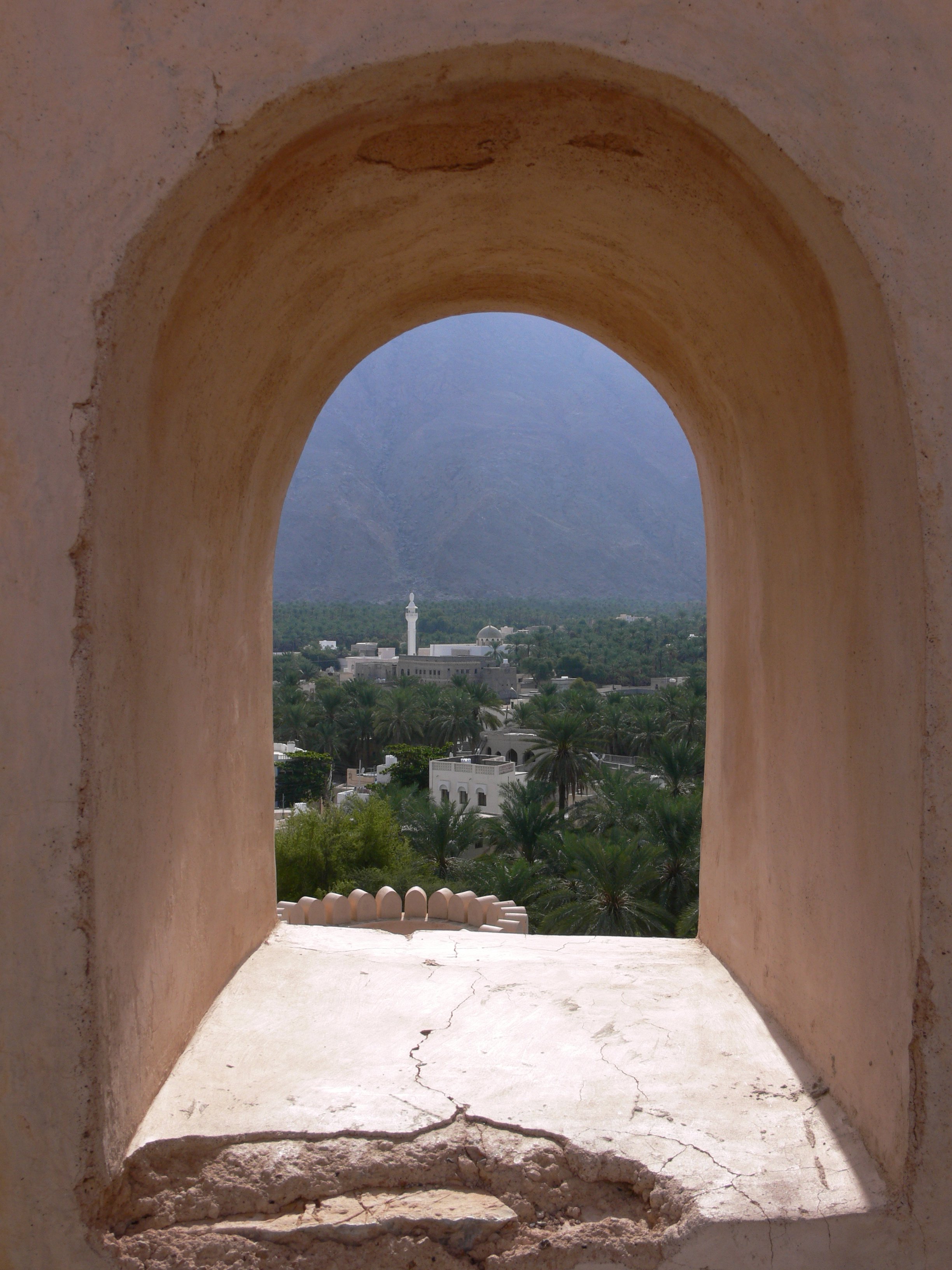|
Ya'rubids
The Yarubid dynasty () (also the Yaruba or Ya'arubi) were rulers of Oman between 1624 and 1742, holding the title of Imam. They expelled the Portuguese from coastal strongholds in Muscat and united the country. They improved agriculture, expanded trade and built up Oman into a major maritime power. Their forces expelled the Portuguese from East Africa and established long-lasting settlements on Zanzibar, Mombasa and other parts of the coast. The dynasty lost power during a succession struggle that started in 1712 and fell after a prolonged period of civil war. Background Oman has traditionally been divided between the relatively barren and sparsely populated interior and the more populous coastal region. There was often little or no overall government in the interior, and the tribes often fought amongst each other. They shared belief in the Ibadi branch of Islam, distinct from the main Sunni and Shia schools. The coastal region, particularly the northeast coast around Muscat, was ... [...More Info...] [...Related Items...] OR: [Wikipedia] [Google] [Baidu] |
Omani Empire
The Omani Empire ( ar, الإمبراطورية العُمانية) was a maritime empire, vying with Portugal and Britain for trade and influence in the Persian Gulf and Indian Ocean. At its peak in the 19th century, Omani influence or control extended across the Strait of Hormuz to modern-day Iran and Pakistan, and as far south as Cape Delgado. After the death of Said bin Sultan in 1856 the empire was divided between his sons into two sultanates, an African section (Sultanate of Zanzibar) ruled by Majid bin Said and an Asian section ( Sultanate of Muscat and Oman) ruled by Thuwaini bin Said. History Becoming a regional power Muscat, which is located in a strategic location on trade routes, came under the control of the Portuguese Empire between 1507 and 1650. However, the Portuguese did not succeed in controlling Oman in its entirety. In mid-17th century, the Omani tribes were able to end the Portuguese presence in Muscat. In the year 1696, under the reign of Saif bin ... [...More Info...] [...Related Items...] OR: [Wikipedia] [Google] [Baidu] |
Nabhani Dynasty
The Nabhani dynasty (or Nabhanids; ar, أسرة بني نبهان ''ʾusrat banī nabhān''), members of the Bani Nabhan family, were rulers of Oman from 1154 until 1624, when the Yaruba dynasty took power. One of their most visible legacies is the Bahla Fort, a large complex of mud brick buildings on stone foundations which is registered as a UNESCO world heritage site. Background After the early days of Islam, the tribes in the interior of Oman were led by Imams, who held both spiritual and temporal power. The Yahmad branch of Azd tribes gained power in the 9th century. They established a system where the ''ulama'' of the Banu Sama, the largest of the Nizari tribes of the interior, would select the Imam. The authority of the Imams declined due to power struggles. During the 11th and 12th centuries Oman was controlled by the Seljuk Empire. They were expelled in 1154, when the Nabhani dynasty came to power. Rule The best quality frankincense, a valuable product in the Middle Ag ... [...More Info...] [...Related Items...] OR: [Wikipedia] [Google] [Baidu] |
Sultan Bin Saif II
Sultan bin Saif II () was the fifth of the Yaruba dynasty of Imams of Oman, a member of the Ibadi sect. He ruled from 1711 to 1718. After his death, leaving a young son as his successor, the country degenerated into civil war. Sultan bin Saif II succeeded his father, Saif bin Sultan, when he died in 1711. He established his capital at Al-Hazm on the road from Rustaq to the coast. Now just a village, there still are remains of a great fortress that he built there around 1710, which contains his tomb. When Sultan bin Saif II died in 1718, his popular twelve-year-old son Saif bin Sultan II was nominal successor. The ''ulama'' instead elected Saif's older brother Muhanna as Imam, who was soon replaced by his cousin Ya'arab bin Bel'arab Ya'arab bin Bel'arab () (died 1723) was one of the rival Imams during the civil wars in Oman in the final years of the Yaruba dynasty. Ya'arab bin Bel'arab was the cousin of Saif bin Sultan II, the young son of Sultan bin Saif II. Saif bin Sultan ... ... [...More Info...] [...Related Items...] OR: [Wikipedia] [Google] [Baidu] |
Sohar
Sohar ( ar, صُحَار, also Romanized as Suḥār) is the capital and largest city of the Al Batinah North Governorate in Oman. An ancient capital of the country that once served as an important Islamic port town, Suhar has also been credited as the mythical birthplace of Sinbad the Sailor. According to the 2010 census, Suhar's population was 140,006, making it Oman's fifth most-populated settlement. Described as an industrial town, the development of the Sohar Industrial Port during the 2000s has transformed it into a major Omani industrial hub. History As the largest town in the region, it has been argued that Suhar is identified with the ancient town called 'Omanah' ( ar, عُمَانَة) mentioned by Pliny the Elder in his '' Natural History''. This settlement is believed to have given Oman its name. According to Al-Tabari, in 893 or 894, during the Abbasid era, there was a dispute about who should rule Oman amongst local factions. A faction that approached the Abbas ... [...More Info...] [...Related Items...] OR: [Wikipedia] [Google] [Baidu] |
Jabrin
Jabrin, also known as Jabreen, ( ar, جبرين) is a small town in Ad Dakhiliyah Governorate in northeastern Oman near Nizwa and the Jabal Akhdar Mountains. The town is known for its impressive castle, which was built by the Yaruba dynasty Imam Bil'arab bin Sultan, who ruled from 1679 to 1692 and who was buried onsite. The castle can be visited independently with an audio guide that is provided at the entrance and which lasts about 25 minutes. Climate See also * List of cities in Oman This is a list of cities and towns in Oman. *Adam, Oman, Adam *Seeb, Oman, As Sib *Al Ashkharah *Al Buraimi *Al Hamra, Oman, Al Hamra *Al Jazer *Blue City, Oman, Al Madina A'Zarqa, formerly known as Blue City *Al Suwaiq *Bahla *Barka, Oman, B ... References Gallery File:Jebrin castle 1.jpg, File:Jebrin castle 2.jpg, File:Jebrin castle 3.jpg, File:Jabrin 4.jpg, File:Jqabrin castle 5.jpg, File:Jabrin castle 7.jpg, File:Jabrin castle 6.jpg, File:Jabrin castle 8.jpg, Exter ... [...More Info...] [...Related Items...] OR: [Wikipedia] [Google] [Baidu] |
Saif Bin Sultan
Saif bin Sultan () was the fourth of the Yaruba dynasty Imams of Oman, a member of the Ibadi sect. He ruled from 1692 to 1711. Where Omani presence became firmly established on the coast. Early years Saif bin Sultan was the son of the second Yaruba Imam, Sultan bin Saif. On his father's death his brother Bil'arab bin Sultan became Imam in 1679. Later Saif bin Sultan fell out with his brother, built up his forces and besieged Bil'arab in Jabrin. After Bil'arab died there in 1692/93 Saif bin Sultan became Imam. Imam Saif bin Sultan invested in improving agriculture, building aflaj in many parts of the interior to provide water, and planting date palms in the Al Batinah Region to encourage Arabs to move from the interior and settle along the coast. He built new schools. He made the castle of Rustaq his residence, adding the Burj al Riah wind tower. Saif bin Sultan continued the struggle against the Portuguese on the East African coast. In 1696 his forces attacked Mombasa, besie ... [...More Info...] [...Related Items...] OR: [Wikipedia] [Google] [Baidu] |
Bil'arab Bin Sultan
Bil'arab bin Sultan () (died 1692) was the third of the Yaruba dynasty of Imams of Oman, a member of the Ibadi sect. He ruled from 1679 to 1692. Bil'arab bin Sultan succeeded as Imam in 1679 after the death of his father, Sultan bin Saif. This confirmed that the succession was now hereditary, since his father had also succeeded dynastically, while in the Ibadi tradition the Imam was elected. He is known for building a fine fort at Jabrin. Most of his reign was occupied in a struggle with his brother, Saif bin Sultan Saif bin Sultan () was the fourth of the Yaruba dynasty Imams of Oman, a member of the Ibadi sect. He ruled from 1692 to 1711. Where Omani presence became firmly established on the coast. Early years Saif bin Sultan was the son of the second Yar ..., who succeeded Bil'arab bin Sultan when he died at Jabrin in 1692. References Citations Sources * Omani monarchy Omani imams Omani Ibadi Muslims 1692 deaths Yaruba dynasty People from Ad Dakhiliyah Gov ... [...More Info...] [...Related Items...] OR: [Wikipedia] [Google] [Baidu] |
Gujarat
Gujarat (, ) is a state along the western coast of India. Its coastline of about is the longest in the country, most of which lies on the Kathiawar peninsula. Gujarat is the fifth-largest Indian state by area, covering some ; and the ninth-most populous state, with a population of 60.4 million. It is bordered by Rajasthan to the northeast, Dadra and Nagar Haveli and Daman and Diu to the south, Maharashtra to the southeast, Madhya Pradesh to the east, and the Arabian Sea and the Pakistani province of Sindh to the west. Gujarat's capital city is Gandhinagar, while its largest city is Ahmedabad. The Gujaratis are indigenous to the state and their language, Gujarati, is the state's official language. The state encompasses 23 sites of the ancient Indus Valley civilisation (more than any other state). The most important sites are Lothal (the world's first dry dock), Dholavira (the fifth largest site), and Gola Dhoro (where 5 uncommon seals were found). Lothal i ... [...More Info...] [...Related Items...] OR: [Wikipedia] [Google] [Baidu] |
Qurayyat, Oman
Qurayyat is a small fishing town 83 km southeast of Muscat, Oman, adjacent to the towns of Sur, Diman Wa Tayeen and Aamerat. A popular stopping point on the way to Sur, Qurayyat is in itself also a very popular destination for Muscat. On 28 June 2018, Qurayyat set the record for the highest daily "low" temperature ever recorded: 42.6 degrees Celsius (109 F). Climate of Qurayyat Given that the state is coastal, the humidity levels rise up to extremes especially in Summer, while mountains remain relatively lower levels of humidity, Al Jabal Al Aswad (The Black Mountain) is located in the inner parts of the state and it is known for extreme cold weathers in Winter and moderate heat in Summer. Qurayyats Icon Most states in Oman have an icon that generally represents the state (For example, Lemon Tree for Saham), and for Qurayyat it is the Capra, given that the animal's habitat is scattered across the mountains of Qurayyat and the connection between Capra and Qurayyat's ... [...More Info...] [...Related Items...] OR: [Wikipedia] [Google] [Baidu] |
Sultan Bin Saif
Sultan bin Saif bin Malik () (died c. 1679) was the second of the Yaruba dynasty of Imams of Oman, a member of the Ibadi sect. He ruled from 1649 to 1679. He completed the work of his predecessor, Nasir bin Murshid, in driving the Portuguese out of Oman. Their last base in Muscat fell to his forces in January 1650. He built up Omani sea power, taking the fight against the Portuguese to their bases in India and East Africa. During his reign the country was peaceful and increasingly prosperous. Accession Sultan bin Saif was the cousin of the Imam Nasir bin Murshid bin Sultan al Ya'Aruba, who had founded the Yaruba dynasty in 1624. The Imam Nasir died on 14 April 1649 and was buried at Nizwa. He left no sons. The notables who gathered at Rustaq on the day he died selected Sultan bin Saif and proclaimed him Imam. The succession appears to have been undisputed. War with the Portuguese When Nasir died, the Portuguese, who had once occupied several ports along the coast, now only had a ... [...More Info...] [...Related Items...] OR: [Wikipedia] [Google] [Baidu] |
Ras Al-Khaimah
Ras Al Khaimah (RAK) ( ar, رَأْس ٱلْخَيْمَة, historically Julfar) is the largest city and capital of the Emirate of Ras Al Khaimah, United Arab Emirates. It is the sixth-largest city in UAE after Dubai, Abu Dhabi, Sharjah, Al Ain and Ajman. The city is divided by a creek into two parts: old town in the west and Al Nakheel in the east. Etymology The name Ras Al Khaimah means "the headland of the tent". It is reported that the city gained its named after a tent was erected there to facilitate navigation. History The northern area of the city today known as Ras Al Khaimah was previously the location of the important Islamic era settlement and port of Julfar. Ras Al Khaimah has been the site of continuous human habitation for 7,000 years, one of the few places in the country and the world where this is the case. Archaeological evidence has demonstrated that the settlement known as Julfar shifted location over time as harbour channels silted up. Excavations of a ... [...More Info...] [...Related Items...] OR: [Wikipedia] [Google] [Baidu] |
Nakhal Fort
Nakhal Fort ( ar, قَلْعَة نَخَل, Qalʿat Nakhal) is a large fortification in Al Batinah Region of Oman. It is named after the ''Wilayah'' of Nakhal. The fort houses a museum, operated by the Ministry of Tourism, which has exhibits of historic guns, and the fort also hosts a weekly goat market. History The fort, also known as Husn Al Heem, was named after the state of Nakhal that exists above the old village of Nakhl. Imams of Wadi Bani Kharous and the Ya'arubah dynasty resided here in the past. Over the centuries, it underwent many renovations and improvements. It was reconstructed by Omani architects in the 17th century. Initially built as a protective measure for an area oasis and nearby trade routes, it passes through the regional capital of Nizwa. The gateway and towers seen now were extensions built in 1834 attributed to imam Said bin Sultan. In 1990, it was fully renovated. In November 2003, Prince Charles visited the restored fort during an official visit to O ... [...More Info...] [...Related Items...] OR: [Wikipedia] [Google] [Baidu] |








.jpg)

